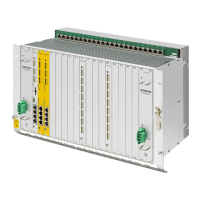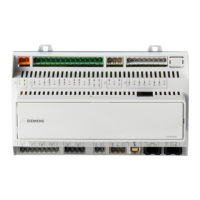&\FOLFSURFHVVLQJ
8VHUSURJUDP
8VHUSURJUDP
5HVWDUW
+DUGZDUHLQWHUUXSW
8VHUSURJUDP
6WDUGHOWD
(UURUDQGRSHUDWLQJ
PHVVDJHV
5HDGZULWHWDJ
3,VHUYLFHV
6SLQGOHFRQWURO
'LVSOD\FRQWURO
+7
%DVLFSURJUDP
%DVLFSURJUDP
'LDJQRVWLFLQWHUUXSW
8VHUSURJUDP
%DVLFSURJUDP
5DFNIDLOXUH
8VHUSURJUDP
%DVLFSURJUDP
7RROPDQDJHPHQW
0&3VLJQDOV
+7bVLJQDOV
%DVLFSURJUDP
6WDUW$683
)&
)&
)%)%)%)%
)&
)&
)&
)&)&)&
)&)&)&)&
)&
)%
2%
2%
2%
)&
2%
)&
2%
)&
Figure 4-1 Structure of the PLC program
Cyclic operation (OB1)
From a chronological viewpoint, the PLC basic program runs ahead of the PLC user program.
The complete processing of the NCK-PLC interface is carried out in cyclic mode. A cyclic
monitoring function is activated between PLC and NCK once boot-up and the first OB1 cycle
have been completed. A PLC failure produces the "2000 Sign-of-life monitoring PLC" alarm in
SINUMERIK Operate.
Programming the PLC
4.1 General information about the PLC program
SINUMERIK STEP 7 Toolbox V15.1
56 Configuration Manual, 12/2018, A5E46279635B AA

